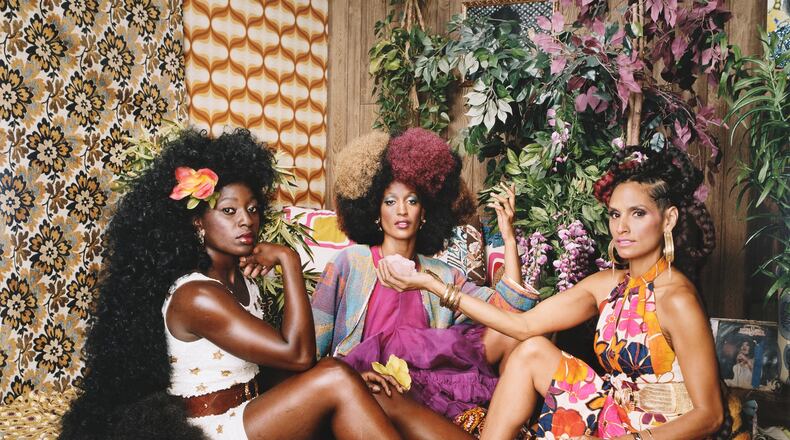The children are grown, the days emptier and rather than settle into middle-age, generations of women from photography’s earliest days took up a camera, went to art school and reimagined themselves as creators, perhaps owning a perspective of their world for the first time.
Credit: Handout
Credit: Handout
It’s one of the many fascinating storylines that run through the must-see High Museum of Art exhibition “Underexposed: Women Photographers From the Collection” which digs into not just the images women made from the 19th century to the present, but the often circuitous, difficult paths they took to make them.
In the it’s-never-too-late school of astounding artistic drive, is Brit Julia Margaret Cameron, one of early photography’s greats who nevertheless did not pick up the camera until 1863, when she was 48 and one of her six children gifted her a camera.
Early works in “Underexposed” show how women were present from the beginning in photography’s 180-year development. Hiding in plain sight, these photographers have often been eclipsed by their male peers in an art world that operates, like the larger world, from past and enduring sins of omission.
Laying bare their complicity as an institution with its own flaws and omissions, gallery notes cop to photographer Edith H. DeLong’s work in the High’s collection being misattributed to her husband. And, of course, many of these images have been unearthed for public exhibition for the first time. To their credit, the High’s photography curators have acknowledged women’s contributions to the medium by bringing their work into the collection. But it may have taken the High’s first woman photography curator in 21 years, Sarah Kennel, to make “Underexposed” happen.
Academics have long discussed the “male gaze” as the organizing principle of film and art; that women are the objects surveyed and men are the ones doing the looking. In “Underexposed” women survey themselves, reflected in an Ilse Bing 1931 self-portrait captured in a series of mirrors. Such self-reflexive examinations of the circumstance of being a woman also crop up in Susan Meiselas’ still-shocking 70s-era documentation of traveling carnival girly shows. She casts a loving gaze on the women themselves in their tawdry costumes and aim-to-please expressions. But her portrait of two men in 1974′s “The Wives” watching a striptease with their wives is a cringe-worthy keyhole peek into the darker byways of male bonding. An equally telling study in body language and subtext, Julie Moos’ portrait of an Alabama matron and her housekeeper “Domestic: Betty & Toni” pulsates with “Get Out” eeriness. The housekeeper’s posture is reserved and wary — she looks, frankly, trapped — while her employer is almost gauche in her comparatively relaxed self-confidence.
Credit: Handout
Credit: Handout
One of the thrilling surprises of “Underexposed” is the number of Atlanta-based artists featured, including Sheila Pree Bright’s pioneering “Suburbia” series depicting upper middle-class Black homes and Angela West’s “My Father” series in which she surveys that most inscrutable of figures, her own dad. Former Atlantan and filmmaker Ruth Leitman is represented in several images, and Sheila Turner, Jill Frank, Sarah Hobbs, Christina Price Washington, V. Elizabeth Turk and Nancy Floyd among others demonstrate that photography has always been a rich and deep part of Atlanta’s cultural production.
Credit: Handout
Credit: Handout
The show ends with a bang with Mickalene Thomas’ saucy, sexy “Les Trois Femmes Deux,” a riff on Édouard Manet’s painting “Le Dejeuner sur l’herbe.” Thomas’s bold color photograph is ornamented with a Donna Summer album, patterns galore and three beauties directly addressing our gaze, asserting their presence and reality in the most matter-of-fact way. Their self-assured gaze is a riposte echoing through the centuries; a slap down to tales of privilege, exclusion and ownership played out in art history.
ART REVIEW
“Underexposed: Women Photographers From the Collection”
Through August 1. Timed tickets and face masks are required. 10 a.m.-5 p.m. Tuesdays-Saturdays; noon-5 p.m. Sundays. $14.50, ages 6 and above; free for children 5 and younger and members. High Museum of Art, 1280 Peachtree St. NE, Atlanta. 404-733-4444, high.org
Bottom line: Run, don’t walk, to this fantastic celebration of Atlanta and international photographers who affirm the power and insight of the female gaze.
About the Author
The Latest
Featured





